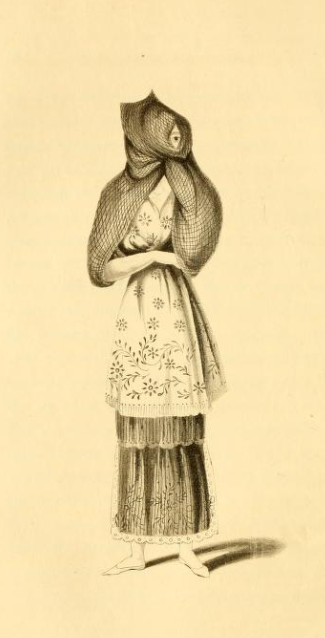
From a European perspective, a navy lieutenant and explorer named Charles Brand describes his travels to Peru. Brand’s journey took place in 1828, which was after Peru gained independence from Spain on July 28, 1821. There were different ideas about race then. People from with lighter skin and people from Europe were thought to be superior. That can be seen through Brand’s European perspective. He describes his travels along with the local people and environment that he comes across.
Brand discusses the dress of the ladies of Lima, and he calls the clothing that they wear disgusting. He states that he is not the only one who believes that, and he includes a statement from a New York paper that included a woman’s letter to her friend in the United Sates. In the letter, the woman agreed with Brand and mentioned that the lower classes wear similar clothing but in lighter colors. Brand also mentioned some of their clothing being dirty with holes in it. He stated that in England, they would be called untidy and dirty.
The division between classes could be seen in casta paintings. They were illustrations of people of different races doing tasks and wearing certain types of clothing. Clothing was one of the ways to show status. People of lower status would often be wearing simple cloth clothing while people of higher status would be wearing more detailed or fashionable clothes. In the paintings, Spaniards would be shown first, and people of African descent would be last. I believe that in the 19th century, some foreigners from places like Europe still felt superior over people from Latin America. That can be seen from some of Brand’s travel descriptions.
Sources
Mariselle Meléndez (2009) “An Eighteenth-Century Visual Representation of the Black Population in Trujillo del Perú: Picturing Cultural and Social Difference” Bulletin of Spanish Studies, 86:7-8, 119-142, DOI: 10.1080/14753821003679171
“Journal of a Voyage to Peru, &c., by Lieutenant Charles Brand; 1828.”
Monthly magazine, or, British register. Vol. 6, Issue. 34, (Oct 1828): 412-414.
